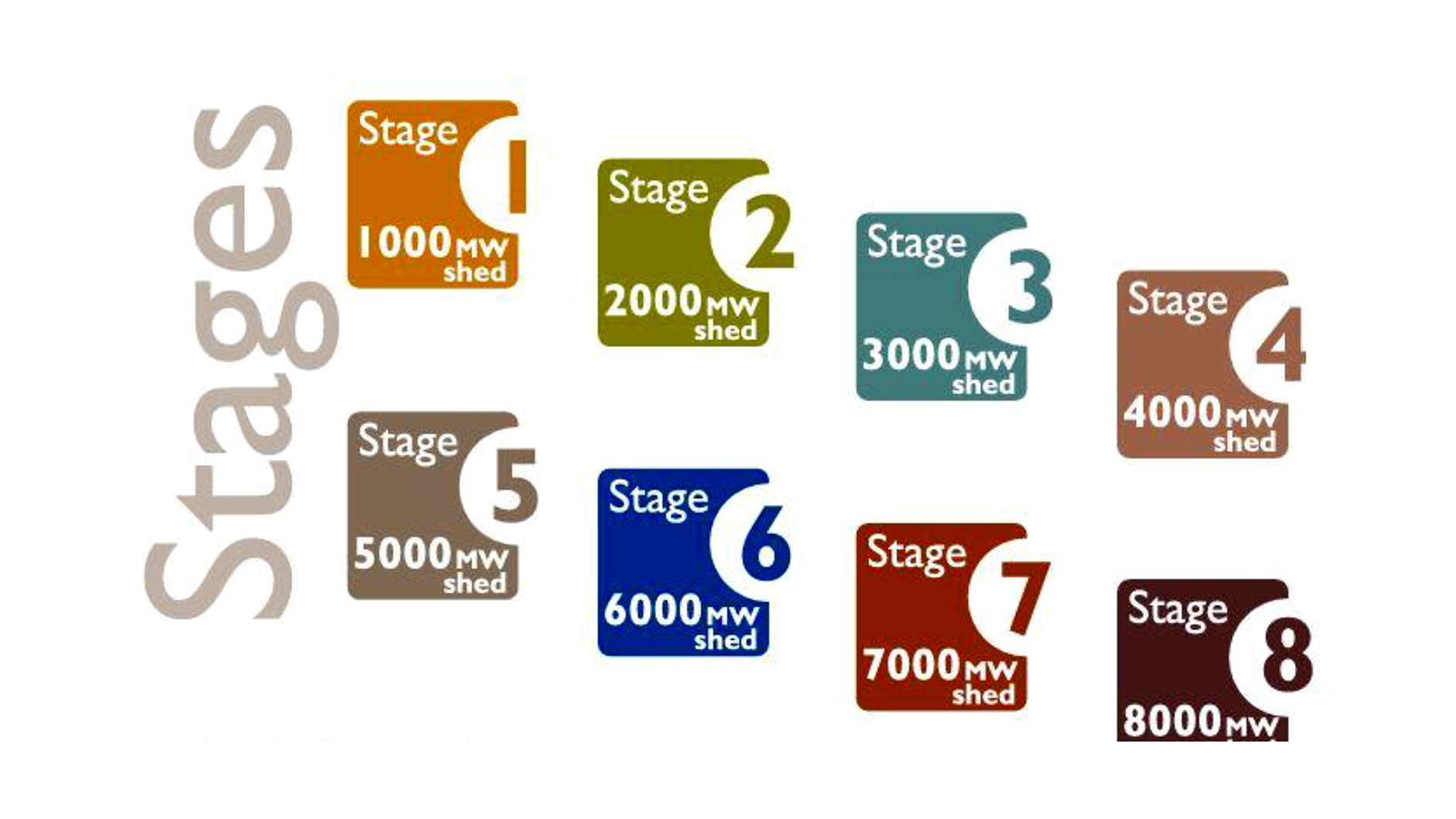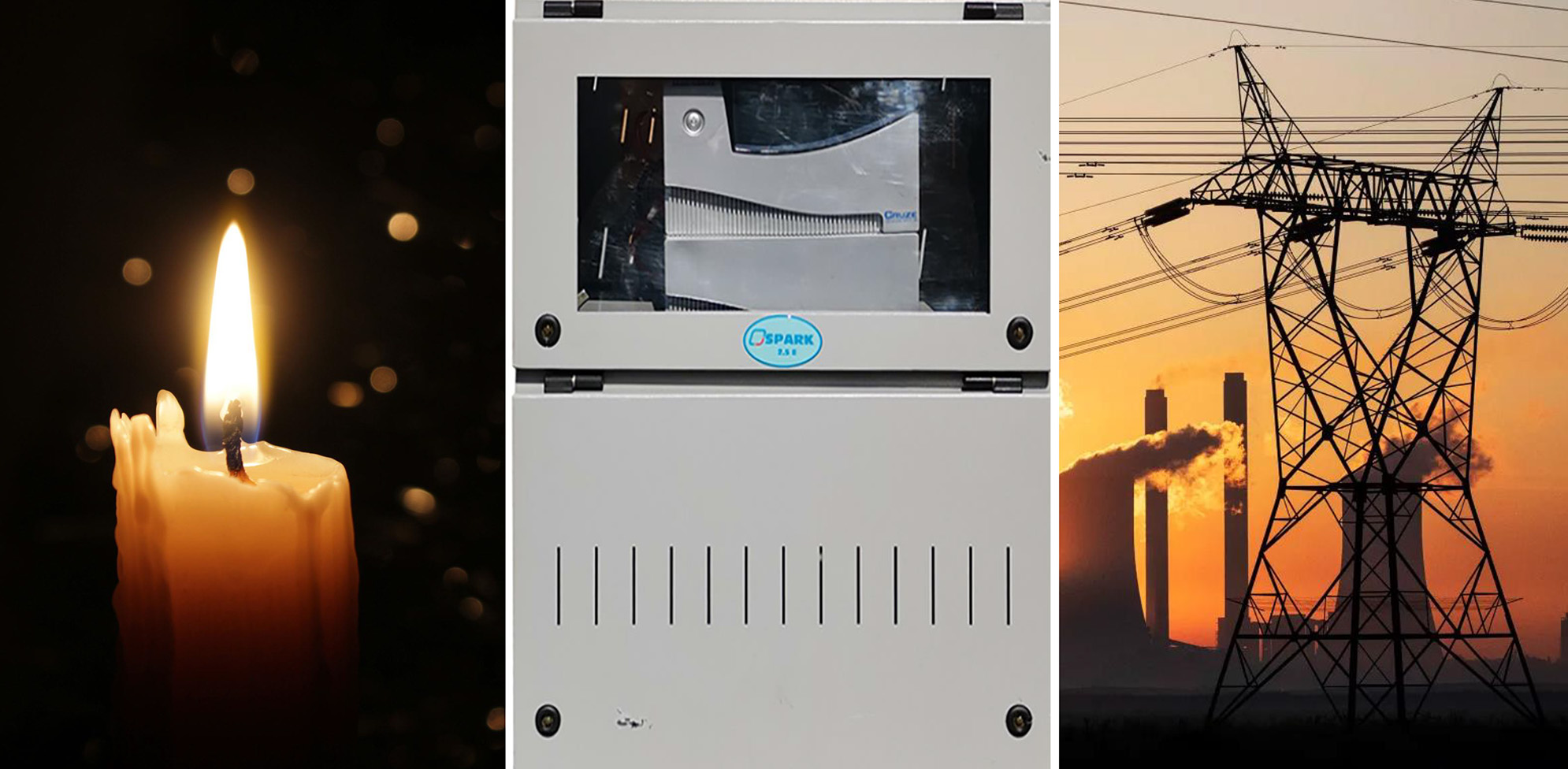Researchers at Stellenbosch University have warned that the rapid increase in the number of home-power battery inverters is putting increasing strain on the national power grid and hampering Eskom’s ability to avoid sudden blackouts via planned load shedding.
To light up their homes during load shedding, increasing numbers of South Africans are now storing power in batteries which produce direct current (DC), whereas household appliances run off alternating current (AC) power. To get around this, an inverter converts the stored DC battery power into AC power.
However, when Eskom’s power resumes in a zone that has just gone through load shedding, the home inverters in that area all begin to recharge their batteries simultaneously — sucking up much of the scarce power supply that Eskom was trying to save through load shedding.
The researchers stress that their concerns mainly relate to the cheaper inverter and battery backup options that do not incorporate solar power augmentation. While solar backup systems also draw on Eskom power at night, their impact is lessened during sunlight hours.
‘Neutering’ load shedding
Writing in the latest issue of the South African Journal of Science, electronic engineering experts Dr Michael Ritchie, Dr Japie Engelbrecht and Professor Thinus Booysen caution that even if only 15% of households install inverters and batteries (without solar power augmentation) the benefits of load shedding households are effectively “neutered”.
Concerned about the steadily increasing load of electricity drawn by home inverters after load shedding, the three researchers set out to model the potential impacts on the Eskom power grid, using an electricity data set of 12,000 households.
Their calculations suggest that if 15% of homes install inverters (without solar power systems to reduce the recharging strain on Eskom) then the benefits of load shedding are reduced by about 60% in summer and about 70% in winter for the residential sector.
And if 25% of homes install batteries/inverters (without solar) then the benefits of household load shedding are cancelled out entirely.
They further caution that if power demand exceeds supply, Eskom generators struggle to keep up and could be disconnected, resulting in a further deficit of supply and “increasing the risk of grid collapse and a total blackout for an extended period of potentially two weeks”.
Therefore, in the absence of additional power generation, Eskom is compelled to manage demand through load shedding (with each stage of load shedding reducing the total energy demand by about 1GW).
 Stellenbosch University electronic engineers are worried that the recent surge in battery-powered home power solutions will weaken Eskom’s ability to manage scarce electricity demand via planned load shedding. (Image: Eskom)
Stellenbosch University electronic engineers are worried that the recent surge in battery-powered home power solutions will weaken Eskom’s ability to manage scarce electricity demand via planned load shedding. (Image: Eskom)
The problem, they say, is that many domestic users have opted for inverters with batteries, thereby avoiding the additional costs and approval hassles of installing solar panels.
They also note that the people who can afford batteries and inverters also happen to be more affluent and tend to be the heaviest electricity users.
So, what is the solution?
The Stellenbosch experts suggest that the two most viable alternatives are to provide further financial incentives for people to install solar power to reduce the recharging load on Eskom — and to restrict the rate at which home batteries are recharged after load shedding.
Read more on Daily Maverick: Residential solar power systems: Soaking up the sun is rewarding, but it isn’t all plain sailing
They note that the default charge rate on home inverters can be as high as 1C (a unit used to measure the speed at which a battery is charged or discharged).
“We recommend that the charging rate of battery backup solutions from the grid is restricted to 0.15C to prevent the high curtailment after a zone is switched on. This lower charge rate should be ample to recharge the battery between bouts of load shedding.”
Booysen notes that most good-quality inverters have a setting that allows the charging rate to be limited.
But what if gatvol South Africans simply decline to adjust the charge rates on existing inverters? Is he suggesting that government regulatory authorities introduce new measures to restrict charging rates?
“I am indeed advocating that the charge rate be limited per household. What exactly [those measures] need to be is an open question. In more affluent countries where there is no load shedding and people can afford solar because of incentives, you are not even allowed to charge off the grid.
“This would have been the best-case scenario, but it will be catastrophic to many businesses if we enforce that in South Africa. So, the next best step is to do two things:
- “Restrict charging to 0.15C (or make it a hard limit of less than 2kW, regardless of battery size), and;
- Incentivise those who install battery backups to also install solar systems. To me, this is a no-brainer, because that incentive will pay back in reduced load shedding, which will protect the grid and the economy.”
Unfortunately, he said, it was difficult to predict current inverter penetration rates at a national level as there was not enough data.
“This is the million-dollar question. No one really knows,” he said.
Eskom has confirmed that it does not know the current penetration level (how many household inverters have been installed at a national level).
An Eskom spokesperson said: “No current estimate is available. Unlike embedded generation (mostly rooftop PV), which changes with the weather conditions and creates a means of measuring the penetration, batteries have no measurable change, making it very difficult to measure.”
Eskom has yet to respond to queries on whether it will push for new regulatory measures to limit recharging levels.
‘Eskom’s problem to fix’
However, the proposal by the Stellenbosch academics has drawn strong criticism from energy analyst Chris Yelland, who stated: “You can’t pin the blame on batteries and inverters because Eskom is failing South Africa… Must we now ban battery backup or restrict battery charging rates and then just sit in the dark and watch the economy collapse?”
Yelland, the MD of EE Business Intelligence, acknowledged that an increase in home battery power recharging was likely to put extra pressure on limited Eskom capacity at certain times.
Read more on Daily Maverick: Home power backup systems – electrical engineers answer your questions
But, he noted, the whole country was not switched off simultaneously during load shedding and he doubted that it was reaching the point where 15% of Eskom customers had switched over to batteries and inverters.
“As I see it, this is Eskom’s problem to fix. Before we start talking about banning or restricting batteries and inverters you might just as well pass regulations to restrict the use of geysers, tumble-dryers, washing machines or swimming pool motors at certain times of the day or immediately after load shedding.
“We should not be planning to live the rest of our lives with load shedding. That would just be nuts. We should be increasing generation capacity as fast as possible and we are already seeing new solar photovoltaic capacity coming on stream for domestic and commercial use.” DM
https://www.youtube.com/watch?v=REeWvTRUpMk




 Stellenbosch University electronic engineers are worried that the recent surge in battery-powered home power solutions will weaken Eskom’s ability to manage scarce electricity demand via planned load shedding. (Image: Eskom)
Stellenbosch University electronic engineers are worried that the recent surge in battery-powered home power solutions will weaken Eskom’s ability to manage scarce electricity demand via planned load shedding. (Image: Eskom)